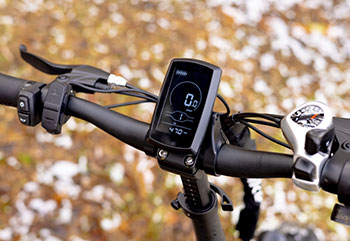Adjusting Your Bicycle Seat: The Ultimate Guide for Comfort and Performance

Adjusting your bicycle seat is a fundamental aspect of optimizing your cycling experience. Whether you are a seasoned rider or just starting, getting your saddle position right can make a significant difference in your comfort, efficiency, and overall enjoyment on the bicycle. In this comprehensive guide, we will delve into the essential steps to help you master the art of adjusting your bicycle seat for maximum comfort and performance.
Importance of Proper Saddle Adjustment
Proper saddle adjustment is crucial for several reasons. It not only enhances comfort during long rides but also plays a key role in preventing injuries and improving pedaling efficiency. Ensure your saddle is positioned correctly so that you can maintain a balanced posture, reduce strain on your joints, and maximize power transfer with each pedal stroke.
Determining the Correct Saddle Height
The first step in adjusting your bicycle seat is finding the correct saddle height. An easy method to determine this is the heel method: place your heel on the pedal at its lowest point your leg should be fully extended without locking the knee. Alternatively, using a smartphone camera to record your pedaling motion can help identify any irregularities that may indicate an incorrect saddle height.
Adjusting Saddle Angle and Position
Once you have set the correct saddle height, focus on adjusting the saddle angle and horizontal position. A level saddle is generally recommended, but slight adjustments can be made based on personal preference and riding style. Experiment with small changes to find the optimal angle that provides both comfort and support. Additionally, ensure that your saddle is positioned horizontally to evenly distribute weight and prevent discomfort.
Tips for a Perfect Saddle Setup
- Regularly check and adjust your saddle height to accommodate changes in riding conditions or preferences.
- Experiment with minor adjustments to fine-tune saddle angle and position for optimal comfort.
- Consider seeking professional guidance from a bicycle fitting expert for personalized advice on achieving the perfect saddle setup tailored to your body mechanics.

Additional Tips for Optimal Saddle Adjustment
- Invest in a quality bicycle saddle that suits your riding style and body anatomy.
- Pay attention to saddle tilt; a slightly nose-up or nose-down position can affect comfort and performance.
- Take breaks during long rides to adjust seating position and relieve pressure points.
Enhanced Riding Experience
Achieving the perfect saddle setup goes beyond just physical adjustments. It is also about creating an environment that enhances your overall riding experience. Consider factors like padded cycling shorts for added comfort, proper hydration to prevent cramps, and regular stretching exercises to maintain flexibility during long rides.
Maintenance and Care
To ensure the longevity and optimal performance of your bicycle seat, regular maintenance is essential. Clean your saddle regularly with mild soap and water, inspect for any signs of wear or damage to both saddle and seat post, and lubricate moving parts as needed to prevent squeaks or stiffness.
Riding in Different Terrains
Adjusting your bicycle seat can also be crucial when riding on different terrains. For off-road cycling, consider a slightly more upright position to maintain control and stability. For high-speed road cycling, a more aggressive position may be preferred for better aerodynamics and power output.
Saddle Materials and Comfort
Different saddle materials can affect comfort and performance. Leather saddles, for example, may require more maintenance but can provide a more natural feel. Synthetic saddles, on the other hand, can be more durable and require less maintenance. Experiment with different materials to find the one that suits your preferences and riding style best.
Mastering the art of adjusting your bicycle seat is a journey that can greatly enhance your cycling experience. By following the steps outlined in this guide from determining the correct saddle height to fine-tuning angle and position you can create a setup that promotes comfort, efficiency, and overall performance on the bicycle. Take control of your ride by ensuring that your bicycle seat is perfectly adjusted to suit your individual needs.
If you need the tools to make fine adjustments, you can find them on our accessories page
- Guide
- Perfomance
- Adjusting
Related Blogs

Cycling Adventures
Bikepacking: An essential guideCheck out this guide full of important tips to make your next bikepack trip fun, safe and thrilling!

Electric Bicycle
A Novice's Guide To E-Bikes: Everything You Need To Know About Electric BicyclesElectric bicycles are creating waves amongst bicycle enthusiasts, but what is it that everyone is loving about them and why should you know all about them? Read here to know more.

Mountain Bikes
A to Z about Mountain Cycles: Your guide to all things MTB!Zooming past the narrow mountainous roads is a thrilling ride. However, we must understand our MTBs first. This blog takes you through the basics of an MTB to make an informed decision.
